A brain-computer interface from the startup Inbrain could be used to treat Parkinson’s disease.


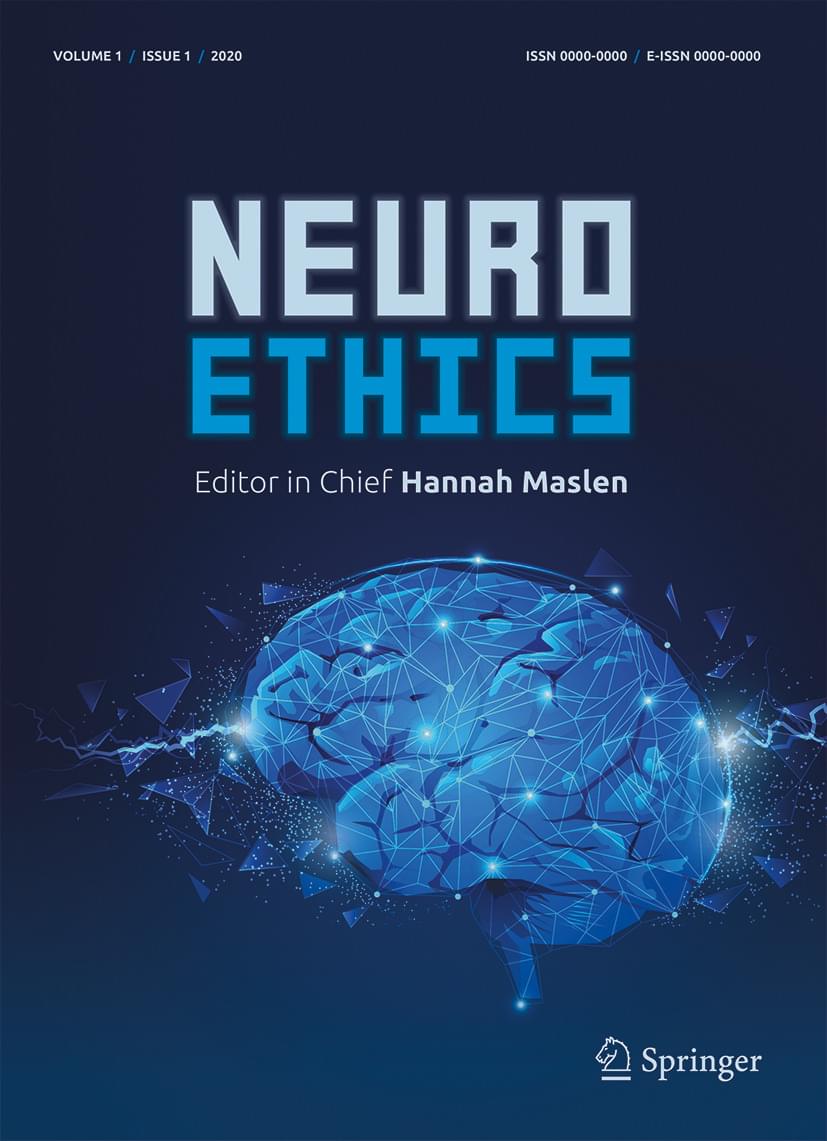
Recently, human brain organoids have raised increasing interest from scholars of many fields and a dynamic discussion in bioethics is ongoing. There is a serious concern that these in vitro models of brain development based on innovative methods for three-dimensional stem cell culture might deserve a specific moral status [1, 2]. This would especially be the case if these small stem cell constructs were to develop physiological features of organisms endowed with nervous systems, suggesting that they may be able to feel pain or develop some form of sentience or consciousness. Whether one wants to envision or discard the possibility of conscious brain organoids and whether one wants to acknowledge or dispute its moral relevance, the notion of consciousness is a main pillar of this discussion (even if not the only issue involved [3]). However, consciousness is itself a difficult notion, its nature and definition having been discussed for decades [4, 5]. As a consequence, the ethical debate surrounding brain organoids is deeply entangled with epistemological uncertainty pertaining to the conceptual underpinnings of the science of consciousness and its empirical endeavor.
It has been argued that neuroethics should circumvent this fundamental uncertainty by adhering to a precautionary principle [6]. Even if we do not know with certainty at which point brain organoids could become conscious, following some experimental design principles would ensure that the research does not raise any ethically problematic features in the years to come. It has also been proposed to redirect the inquiry to the “what-kind” issue (rather than the “whether or not” issue) in order to rely on more graspable features for ethical assessment [7]. These strategies, however, make the epistemological issue even more relevant. The question of whether or not current and future organoids can develop a certain form of consciousness (without presupposing what these different forms of consciousness might be) and how to assess this potentiality in existing biological systems is bound to stay with the field of brain organoid technology for a certain time. Even if it is not for advancing ethical issues, there is a theoretical interest in determining the boundary conditions of consciousness and its potential emergence in artificial entities. Although the methodological and knowledge gap is still wide between the research community on cellular biology and stem cell culture on the one side and the research community on consciousness such as cognitive neuroscience on the other, there will be more and more circulation of ideas and methods in the coming years. The results of this scientific endeavor will, in turn, impact ethics.
In this article, I look back at the history of consciousness research to find new perspectives on this contemporary epistemological conundrum. In particular, I suggest the distinction between “global” theories of consciousness and “local” theories of consciousness as a thought-provoking one for those engaged in the difficult task of adapting models of consciousness to the biological reality of brain organoids. The first section introduces the consciousness assessment issue as a general framework and a challenge for any discussion related to the putative consciousness of brain organoids. In the second section, I describe and critically assess the main attempt, so far, at solving the consciousness assessment issue relying on integrated information theory. In the third section, I propose to rely on the distinction between local and global theories of consciousness as a tool to navigate the theoretical landscape, before turning to the analysis of a notable local theory of consciousness, Semir Zeki’s theory of microconsciousness, in the fourth section. I conclude by drawing the epistemological and ethical lessons from this theoretical exploration.

People who struggle with facial recognition can find forming relationships a challenge, leading to mental health issues and social anxiety. A new study provides insights into prosopagnosia or face blindness, a condition that impairs facial recognition and affects approximately 1 in 50 people.
The researchers scanned the brains of more than 70 study participants as they watched footage from the popular TV series “Game of Thrones.” Half of the participants were familiar with the show’s famously complex lead characters and the other half had never seen the series.
When lead characters appeared on screen, MRI scans showed that in neurotypical participants who were familiar with the characters, brain activity increased in regions of the brain associated with non-visual knowledge about the characters, such as who they are and what we know about them.

As the world grapples with an aging population, the rise in neurodegenerative diseases such as Alzheimer’s and Parkinson’s is becoming a significant challenge. These conditions place a heavy burden not only on those afflicted but also on their families and society at large. Traditional treatments, including drug therapy and surgery, often come with side effects and high costs, and more critically, they fail to halt the progression of neuronal degeneration or prevent the death of neurons in patients.

New research has revealed that the lag observed in organic electrochemical transistors (OECTs) when switched on is due to a two-step activation process, providing crucial insights for designing more effective and customizable OECTs for various technological and biological applications.
Researchers who want to bridge the divide between biology and technology spend a lot of time thinking about translating between the two different “languages” of those realms.
“Our digital technology operates through a series of electronic on-off switches that control the flow of current and voltage,” said Rajiv Giridharagopal, a research scientist at the University of Washington. “But our bodies operate on chemistry. In our brains, neurons propagate signals electrochemically, by moving ions — charged atoms or molecules — not electrons.”
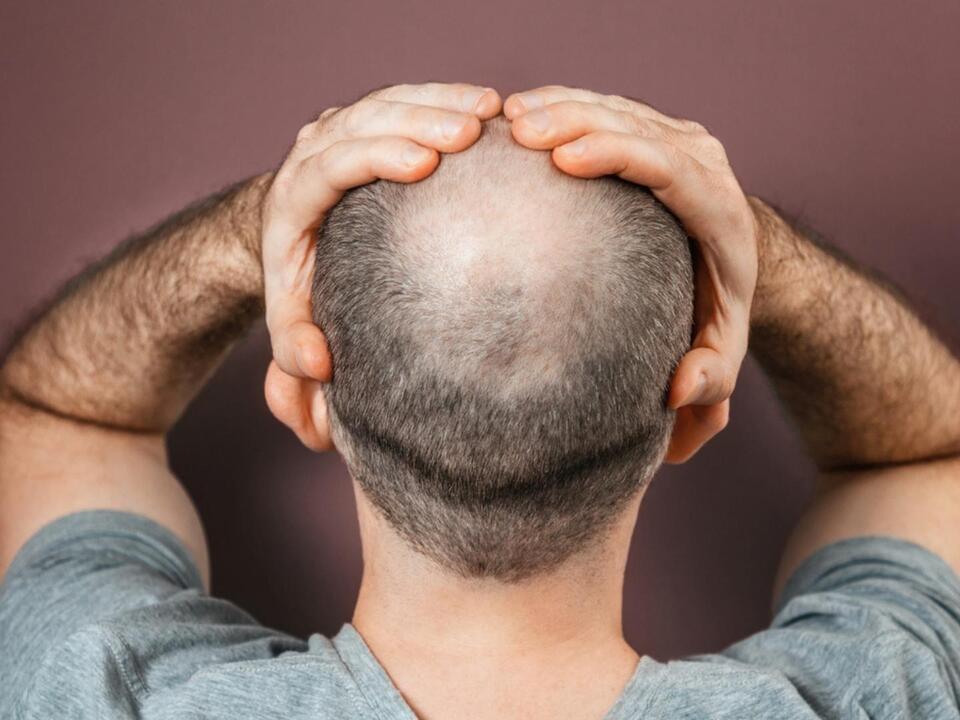
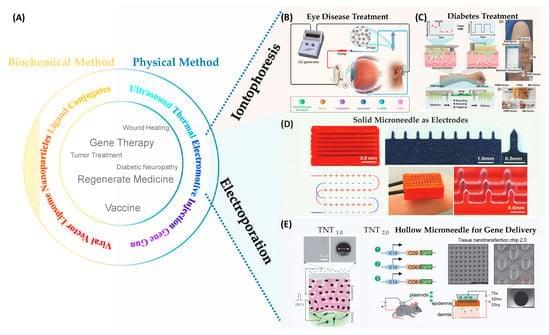
Nanotransfection is very useful and could be used as a way to heal oneself on a smartphone in one touch with cell reprogramming and much more like gene transfer.
Tissue nanotransfection (TNT), a cutting-edge technique of in vivo gene therapy, has gained substantial attention in various applications ranging from in vivo tissue reprogramming in regenerative medicine, and wound healing to cancer treatment. This technique harnesses the advancements in the semiconductor processes, facilitating the integration of conventional transdermal gene delivery methods—nanoelectroporation and microneedle technologies. TNT silicon chips have demonstrated considerable promise in reprogramming fibroblast cells of skin in vivo into vascular or neural cells in preclinical studies to assist in the recovery of injured limbs and damaged brain tissue. More recently, the application of TNT chips has been extended to the area of exosomes, which are vital for intracellular communication to track their functionality during the wound healing process.
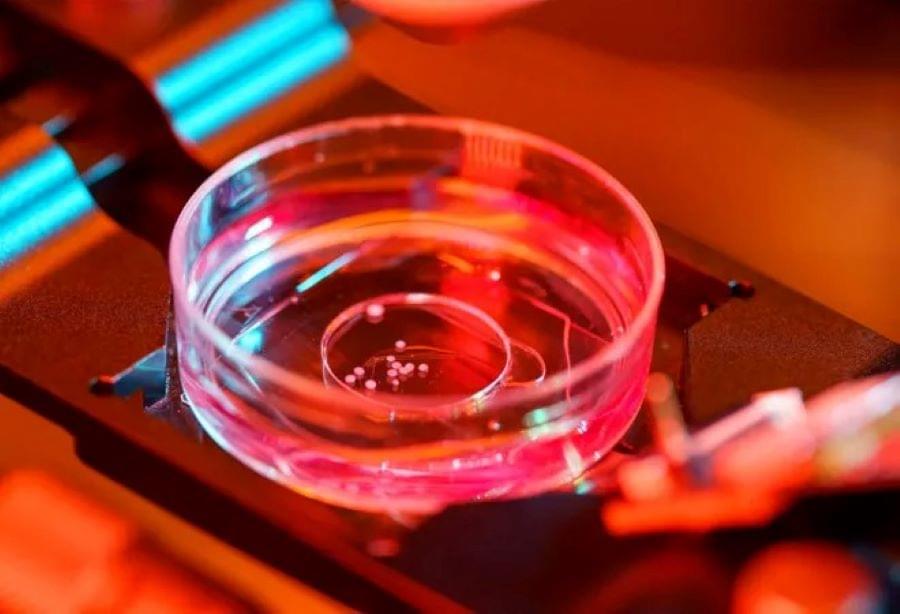
The field of organoid intelligence is recognized as groundbreaking. In this field, scientists utilize human brain cells to enhance computer functionality. They cultivate tissues in laboratories that mimic real organs, particularly the brain. These brain organoids can perform brain-like functions and are being developed by Dr. Thomas Hartung and his team at the Johns Hopkins Bloomberg School of Public Health.
For nearly two decades, scientists have used organoids to conduct experiments without harming humans or animals. Hartung, who has been cultivating brain organoids from human skin samples since 2012, aims to integrate these organoids into computing. This approach promises more energy-efficient computing than current supercomputers and could revolutionize drug testing, improve our understanding of the human brain, and push the boundaries of computing technology.
The conducted research highlights the potential of biocomputing to surpass the limitations of traditional computing and AI. Despite AI’s advancements, it still falls short of replicating the human brain’s capabilities, such as energy efficiency, learning, and complex decision-making. The human brain’s capacity for information storage and energy efficiency remains unparalleled by modern computers. Hartung’s work with brain organoids, inspired by Nobel Prize-winning stem cell research, aims to replicate cognitive functions in the lab. This research could open new avenues for understanding the human brain by allowing ethical experimentation. The team envisions scaling up the size of brain organoids and developing communication tools for input and output, enabling more complex tasks.
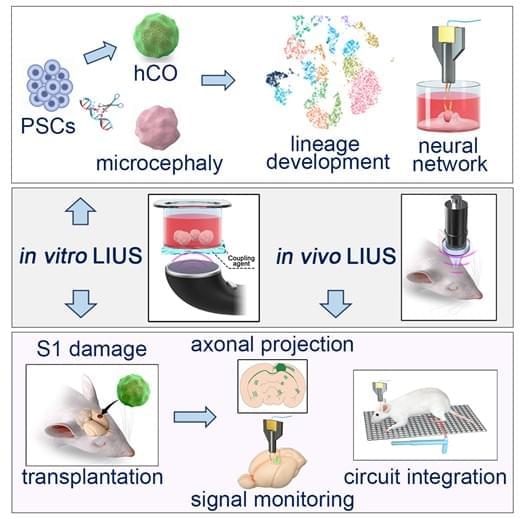
Human brain organoids represent a remarkable platform for modeling neurological disorders and a promising brain repair approach. However, the effects of physical stimulation on their development and integration remain unclear. Here, we report that low-intensity ultrasound significantly increases neural progenitor cell proliferation and neuronal maturation in cortical organoids. Histological assays and single-cell gene expression analyses reveal that low-intensity ultrasound improves the neural development in cortical organoids. Following organoid grafts transplantation into the injured somatosensory cortices of adult mice, longitudinal electrophysiological recordings and histological assays reveal that ultrasound-treated organoid grafts undergo advanced maturation. They also exhibit enhanced pain-related gamma-band activity and more disseminated projections into the host brain than the untreated groups. Finally, low-intensity ultrasound ameliorates neuropathological deficits in a microcephaly brain organoid model. Hence, low-intensity ultrasound stimulation advances the development and integration of brain organoids, providing a strategy for treating neurodevelopmental disorders and repairing cortical damage.
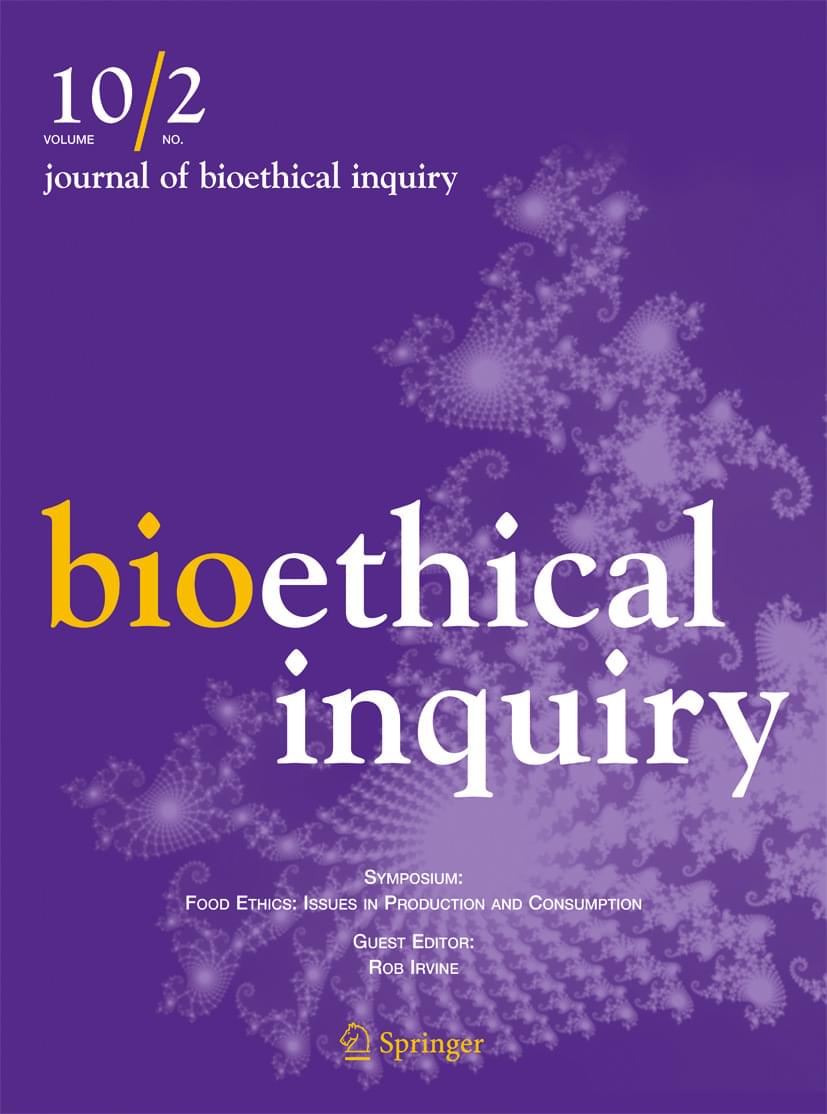
One of the most debated ethical concerns regarding brain organoids is the possibility that they will become conscious (de Jongh et al. 2022). Currently, many researchers believe that human brain organoids will not become conscious in the near future (International Society for Stem Cell Research 2021). However, several consciousness theories suggest that even existing human brain organoids could be conscious (Niikawa et al. 2022). Further, the feasibility depends on the definition of “consciousness.” For the sake of argument, we assume that human brain organoids can be conscious in principle and examine the legal implications of three types of “consciousness” in the order in which they could be easiest to realize. The first is a non–valenced experience—a mere sensory experience without positive or negative evaluations. The second is a valenced experience or sentience— an experience with evaluations such as pain and pleasure. The third is a more developed cognitive capacity. We assume that if any consciousness makes an entity a subject of (more complex) welfare, it may need to be legally (further) protected.
As a primitive form of consciousness, a non–valenced experience will, if possible, be realized earlier by human brain organoids than other forms of consciousness. However, the legal implications remain unclear. Suppose welfare consists solely of a good or bad experience. In that case, human brain organoids with a non–valenced experience have nothing to protect because they cannot have good or bad experiences. However, some argue that non–valenced experiences hold moral significance even without contributing to welfare. In addition, welfare may not be limited to experience as it has recently been adopted in animal ethics (Beauchamp and DeGrazia 2020). Adopting this perspective, even if human brain organoids possess only non–valenced experiences—or lack consciousness altogether—their basic sensory or motor capacities (Kataoka and Sawai 2023) or the possession of living or non-living bodies to utilize these capacities (Shepherd 2023), may warrant protection.